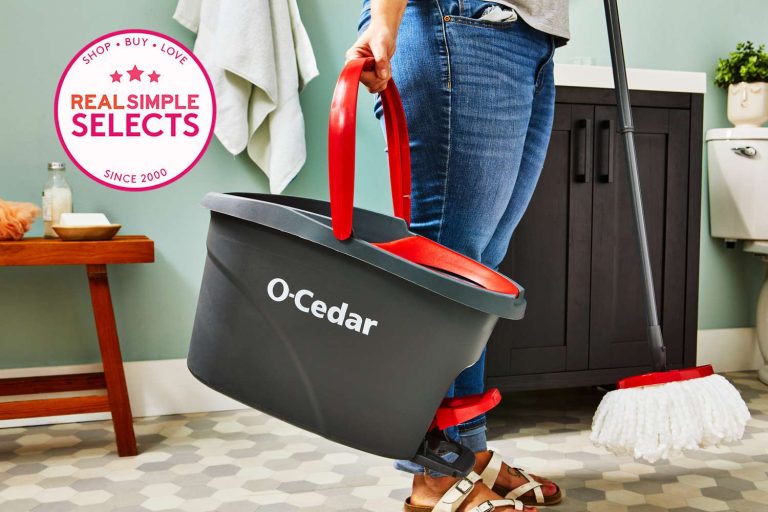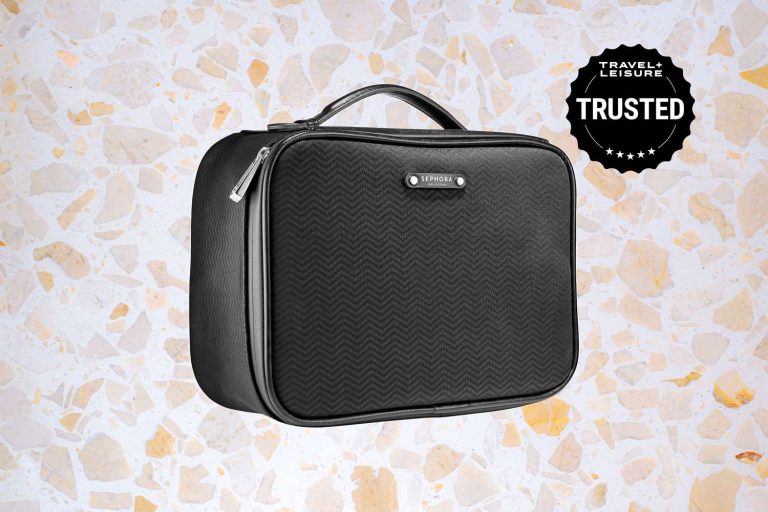9 Best Belt Sanders for Woodworking Projects: Top Picks & Expert Reviews 2024
Choosing the right belt sander can transform your woodworking projects from amateur to professional. With so many options on the market, finding the perfect one might seem overwhelming. But don’t worry, we’ve done the hard work for you.
In this guide, you’ll discover the 9 best belt sanders available today. Whether you’re a seasoned woodworker or just starting out, these top picks will help you achieve smooth, flawless finishes with ease. Get ready to elevate your craftsmanship and make your projects shine.
Belt Sander Evolution and Types
Belt sanders have come a long way since their inception, evolving into versatile tools that cater to various woodworking needs. Let’s explore the history and different types of belt sanders.
History of Belt Sanders
The first belt sanders emerged in the early 20th century, revolutionizing woodworking with their efficiency. James W. Stuart invented the first hand-held belt sander in the 1930s, making sanding faster and more precise. Over the decades, enhancements like dust collection systems and ergonomic designs have made belt sanders indispensable in workshops.
Different Types of Belt Sanders
Belt sanders come in several types, each suited for specific tasks:
- Handheld Belt Sanders
Handheld belt sanders are portable and ideal for smoothing large, flat surfaces. They’re great for jobs that require mobility and flexibility. - Stationary Belt Sanders
Stationary belt sanders are fixed units perfect for heavy-duty sanding tasks. These machines excel in workshops that demand consistent, high-performance sanding. - Benchtop Belt Sanders
Benchtop belt sanders combine portability with stability, offering a compact solution for small to medium projects. They’re a favorite among hobbyists for their balance of size and power. - Combination Belt and Disc Sanders
Combination belt and disc sanders feature both belt and disc sanding functions, providing versatility for various woodworking projects. They’re an excellent choice for users who need multi-functional tools. - Belt File Sanders
Belt file sanders are designed for precision work in tight spaces. They have narrow belts perfect for detailed sanding, making them ideal for intricate woodworking tasks.
Each type of belt sander serves a unique purpose, enhancing the versatility and efficiency of your woodworking projects.
Criteria for Choosing the Best Belt Sander
When selecting the best belt sander, consider various factors to ensure it meets your specific needs and requirements.
Power and Speed
Look for a belt sander with sufficient power to handle various materials. Choose a model with at least a 6-amp motor for adequate performance. Verify the speed range, measured in feet per minute (FPM). Models with variable speed settings, typically ranging from 500 to 1500 FPM, offer versatility for different sanding tasks.
Ease of Use
Select a belt sander that’s easy to handle and control. Check the weight to ensure it’s manageable for extended use. Opt for ergonomic designs with comfortable grips and intuitive controls. Features like dust collection systems and easy belt change mechanisms enhance the user experience.
Durability and Brand Reputation
Invest in a belt sander from a reputable brand known for quality and durability. Consider materials like metal housings and reinforced components. Research user reviews and ratings to ensure long-lasting performance. Reliable brands like Makita, DeWalt, and Bosch often offer better warranties and customer support.
Top 3 Entry-Level Belt Sanders
Selecting an entry-level belt sander can be daunting, but the following models offer excellent features and benefits for beginners.
Model 1: Features and Benefits
The Makita 9903 stands out for its powerful 8.8-amp motor, making it perfect for a variety of sanding tasks. Its variable speed control allows you to adjust the belt speed from 690 to 1,440 feet per minute, giving you flexibility for different materials. An ergonomic design ensures comfortable use, while the inclusion of an efficient dust collection system keeps your workspace clean. This model is ideal for those seeking reliability and performance without breaking the bank.
Model 2: Features and Benefits
The WEN 6321 is renowned for its affordability and ease of use, making it a top choice for entry-level users. It features a 7-amp motor that delivers a belt speed of 820 feet per minute, suitable for basic sanding projects. Its lightweight design, weighing only 6 pounds, ensures less user fatigue. The adjustable front roller allows for better sanding in tighter spaces, and the dust collection bag makes cleanup straightforward. This model provides excellent value for occasional home use.
Model 3: Features and Benefits
The SKIL 7510-01 stands out with its 6-amp motor and auto-track system, which keeps the belt centered for more precise sanding. Its micro-filtration system captures fine dust particles, ensuring a cleaner workspace. The pressure control technology alerts you when the correct sanding pressure is applied, making it user-friendly for beginners. The compact design and affordable price point make it a great choice for those starting in woodworking.
Each of these entry-level belt sanders offers unique features and benefits that cater to different needs, ensuring you get the best results for your sanding projects.
Top 3 Mid-Range Belt Sanders
For those who need a balance between performance and affordability, mid-range belt sanders offer powerful features without breaking the bank. Here are the top 3 mid-range belt sanders that deliver great value and efficiency.
Model 4: Features and Benefits
The DeWalt DWE6423K provides excellent sanding performance for demanding projects. Its 3-amp motor gives enough power to handle hardwoods and other tough materials. With variable speed control ranging from 8,000 to 12,000 OPM, you can fine-tune it to match the specific sanding task. The ergonomic design ensures a comfortable grip, while the dust collection system keeps your workspace clean. Additionally, its compact size makes it easy to maneuver in tight spaces, enhancing its versatility for various applications.
Model 5: Features and Benefits
The Makita 9403 stands out with its powerful 11-amp motor and efficient dust collection system. This sander excels in heavy-duty jobs, thanks to its impressive speed of 1,640 feet per minute (FPM). The noise level is significantly lower than most competitors, making it a quieter option for intensive use. The large front grip adds comfort during prolonged use, and the rugged construction ensures longevity. The Makita 9403 is ideal for those who frequently work with large pieces of lumber or need consistent power for extended periods.
Model 6: Features and Benefits
The Bosch 1274DVS combines user-friendly features with professional-grade performance. Its 6.5-amp motor and variable speed dial offer solid control from 3,100 to 7,000 FPM. Bosch’s Constant Response Circuitry maintains the selected speed under load, providing smooth and consistent sanding results. The sander’s slim profile and lightweight design make it particularly easy to handle, reducing user fatigue during extended projects. The micro-filter system efficiently captures fine dust particles, promoting a cleaner environment.
By choosing any of these mid-range belt sanders, you’ll achieve optimal results without compromising on quality or affordability.
Top 3 High-End Belt Sanders
If you’re searching for premium options, these top 3 high-end belt sanders offer unparalleled performance, durability, and advanced features.
Model 7: Features and Benefits
The Festool BS 75 E boasts an impressive 1,010-watt motor, ensuring consistent power. Its electronic speed control maintains constant speed under load, providing smooth, even finishes. With its balanced design, you’ll experience minimal user fatigue, even during prolonged operations. The integrated dust extraction system keeps your workspace clean, improving both safety and visibility.
Model 8: Features and Benefits
The Makita 9404 delivers power and precision with its 8.8-amp motor and electronic speed control. The variable speed dial allows you to match the speed to the application, enhancing versatility. Its low-noise operation makes it perfect for professional workshops. The auto-tracking belt system eliminates the need for belt adjustments, saving you time and effort. The cloth dust bag ensures efficient dust collection, fostering a healthier work environment.
Model 9: Features and Benefits
The Bosch 1276D boasts a 7.5-amp motor and a variable speed dial, offering excellent control for diverse materials. Its compact, ergonomic design enhances user comfort. The microfilter system captures fine dust particles, keeping your work area clean. The tool-free belt change feature allows for quick and easy belt swaps, maximizing productivity.
Additional Considerations When Buying a Belt Sander
When choosing the best belt sander, there are a few more factors you should keep in mind to ensure you’re getting the optimal tool for your needs.
Accessories and Attachments
Consider the accessories and attachments included with your belt sander. Some models come with additional features like dust collection bags, sanding belts, and auxiliary handles, which can enhance usability. Look for sanders that offer easy-to-change belts and options for different sanding grits. Attachments such as edge guides and sanding frames can provide more precision and control in your projects, making them invaluable for detailed work.
Warranty and Customer Service
Verify the warranty and customer service offered by the manufacturer. High-quality belt sanders often come with robust warranties, which can range from one to three years or more. Brands with excellent customer service will make maintenance and troubleshooting easier, ensuring that you can rely on your tool. Favor companies known for responsive support and accessible service centers, as these can significantly impact your overall experience.
User Reviews and Feedback
User reviews and feedback provide invaluable insights into the performance and reliability of belt sanders. Here’s what real users have to say about these tools.
What Buyers Like Most
Users often praise the powerful motors in models like the Makita 9403 and Festool BS 75 E, which handle heavy-duty tasks effortlessly. Variable speed settings are another popular feature, allowing for greater control and versatility. The efficient dust collection systems in models like the Bosch 1274DVS are highly appreciated for keeping workspaces clean. Ergonomic designs in sanders such as the DeWalt DWE6423K receive compliments for reducing user fatigue during prolonged use. Durability and build quality also frequently receive positive remarks, particularly for well-known brands like Makita and Bosch.
Common Issues Reported
Some users report issues like excessive noise, especially with more powerful models. Dust collection systems sometimes get criticized for not being entirely effective. Weight can be a concern; heavier models may cause fatigue during extended use. Belt tracking problems also come up occasionally, with users needing to frequently adjust the belt. Lastly, some users mention high prices for premium models like the Festool BS 75 E, making them less accessible for hobbyists.
Conclusion
Choosing the right belt sander can significantly enhance your woodworking projects. Whether you’re a beginner or a seasoned professional, there’s a belt sander out there that fits your needs. From entry-level models to high-end options, the key is to consider factors like power, speed, ease of use, and durability.
Reputable brands like Makita, DeWalt, and Bosch offer reliable options with powerful motors, variable speed settings, and efficient dust collection systems. Don’t forget to look into user reviews and feedback to ensure you’re making a well-informed decision.
Investing in the right belt sander will not only improve your woodworking experience but also ensure that your projects are completed with precision and efficiency.






